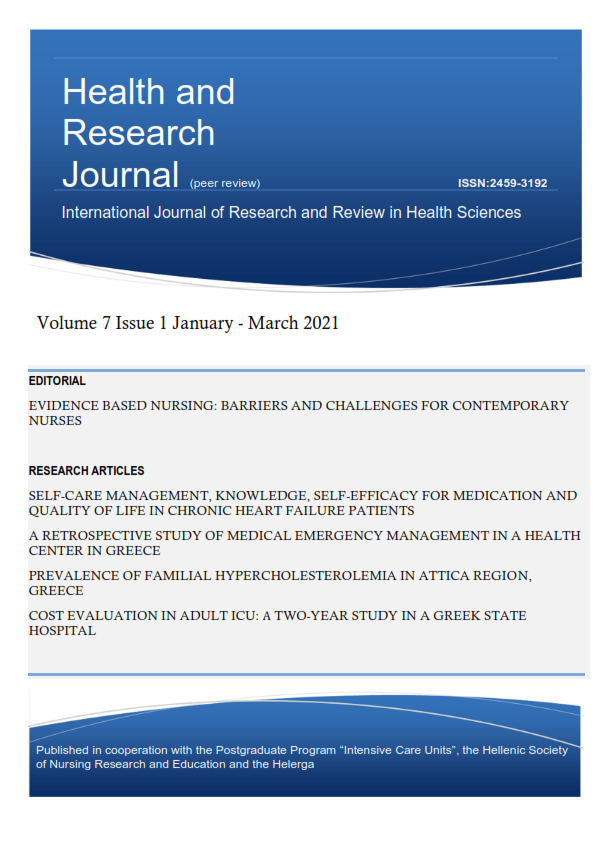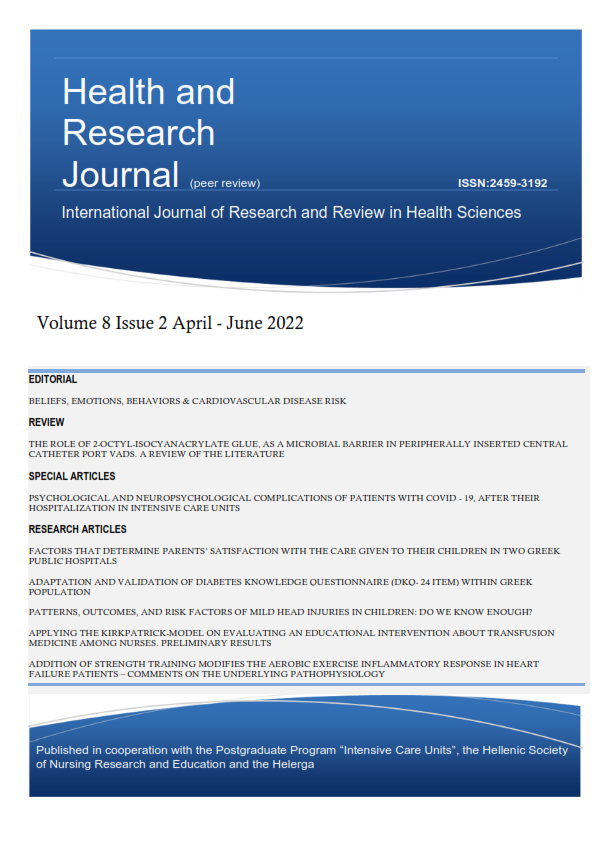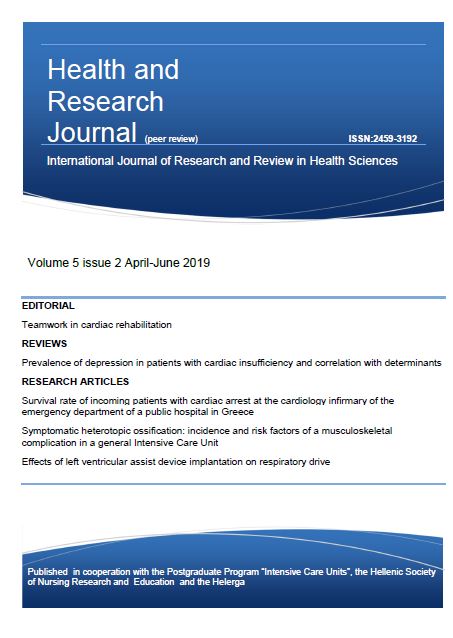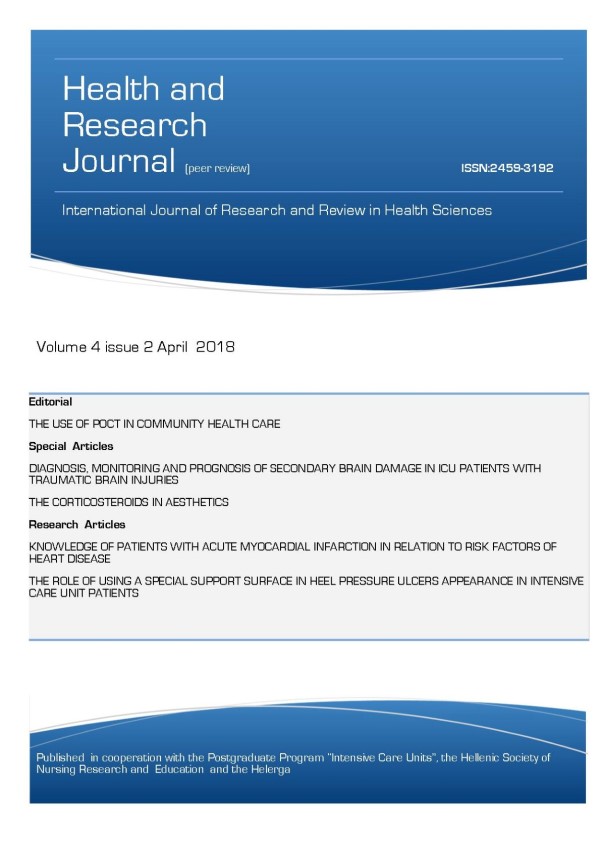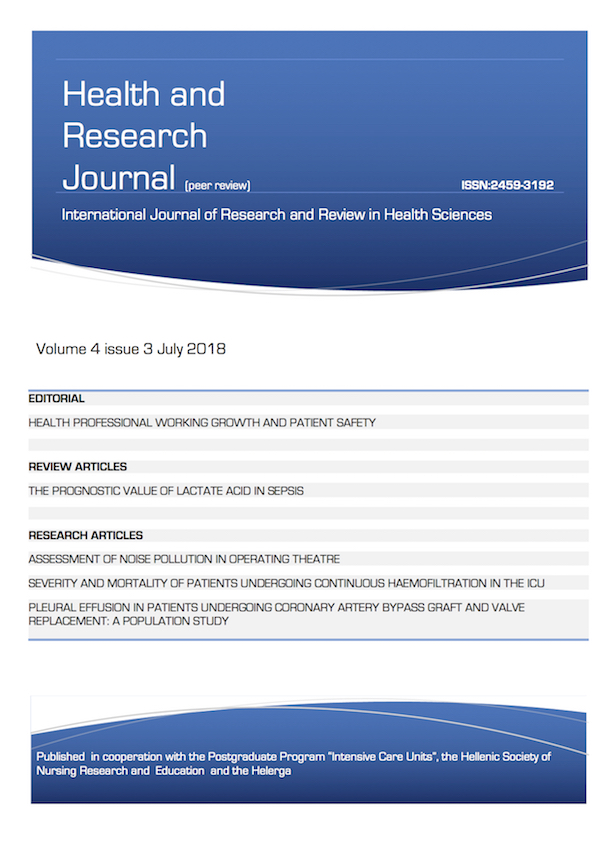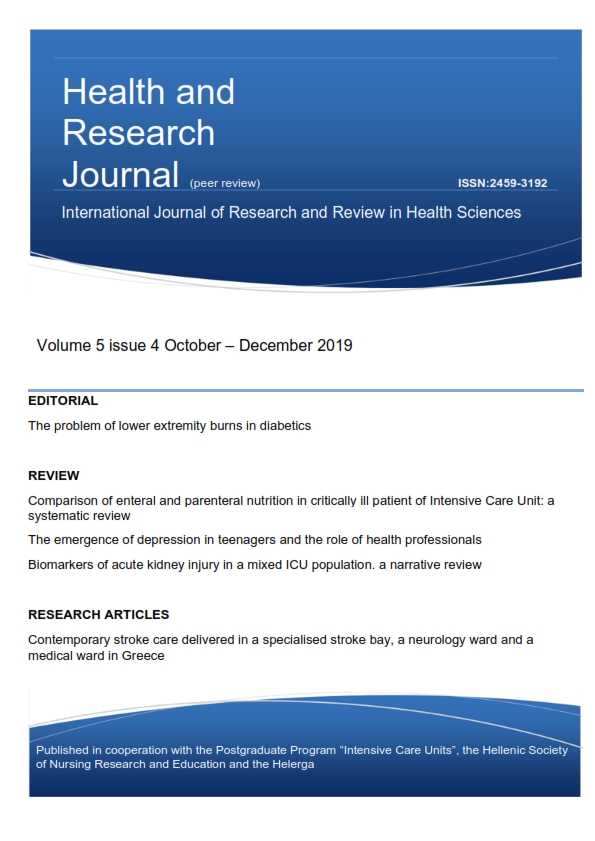Delirium in general intensive care unit survivors

Abstract
Introduction: The last decades, delirium, an organic psycho syndrome frequently found in hospitalized patients in the Intensive Care Unit (ICU), has been recognized as an important factor affecting patient’s prognosis.
Aim: The purpose of the present study was to evaluate the incidence of delirium in patients hospitalized in general ICU of a tertiary hospital of Attica.
Material and Method: The studied sample consisted of 93 patients. a specific record form which was developed according to the needs of this study, was used for data collection.. The severity of the disease was calculated using international ICU scoring systems; Acute Physiology and Chronic Health Evaluation II (APACHEII), Simplified Acute Physiology Score III (SAPS III), Sepsis-related Organ Failure Assessment (SOFA) score and the presence of delirium was evaluated by implementing the Confusion Assessment Method for the ICU (CAM-ICU). Data analysis was performed by the statistical package Statistical Package for Social Sciences (SPSS) ver.19.
Results: 62.4% (n = 58) of the studied sample were male. Of the 93 patients, 39 (41.9%) exhibited delirium; the 15 patients (16.1%) did not develop while the other 39 (41.9%) patients of the sample could not be tested for the syndrome. The incidence of the syndrome was high as the rate of premature mortality in less than 28 days. In particular, all the patients who died (n=41), the rate of premature mortality was 56% (n=23). The study failed to show a relationship of delirium with known risk factors (age, high severity of disease, infection and benzodiazepine use) patients’ outcome, ICU length of stay and duration of mechanical ventilation. No association emerged between sedatives and delirium occurrence.
Conclusions: The hypothesis of the study dictate a relationship between delirium appearance and advanced age, high severity of disease, benzodiazepine use and infection based on previous research results. However, none of these relationships emerged in this study.
Article Details
- How to Cite
-
Giavasi, G., Marvaki, C., Kapadohos, T., & Nanas, S. (2016). Delirium in general intensive care unit survivors. Health & Research Journal, 2(2), 121–138. https://doi.org/10.12681/healthresj.19812
- Section
- Original Articles
Copyright notice:
The journal "Health and Research Journal" reserves the rights for copyright of the content of the website and also the copyright of the articles published.
By virtue of their appearance in this journal, the articles are free to be used for non-commercial purposes. However, the articles cannot and must not be used in anyway, published elsewhere or modified without any reference to the author and the first publication of the article.



